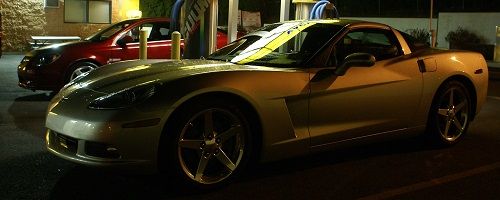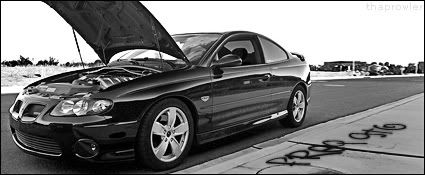I'm in the process of designing an intake manifold, but I'm running into a slight problem. For the proper resonant frequencies in the powerband I want, the valves to plenum distance needs to be either 11", 15" or 23" in length....but there is only about a total of 10" between the manifold flange and the radiator fan/front of the body, so I think it will need to be an 11" distance between the penum and valves since I want to use straight runners. This is the 4th resonant frequency, so I guess my question is, is there a significant loss in wave energy by going with the 4th frequency compared to the 2nd or 3rd? And if so, how much? Beau, if you're reading this, I remember you mentioned you make manifolds for a living, so I would like to especially hear from you. Anyone else that has insight on this would be greatly appreciated as well. Thanks.
-
"Youth in Asia"...I don't see anything wrong with that.
Due to the massive influx of "what intake should I get?" and "How do I wire my m3 mirror" type threads. I would have to say that your replies will be minimal at best. I really wish I could help, but I can't

.

keep in mind... an 11" distance from the top of the valve to the plenum isn't going to be 11" off the head... you have to measure from the inside of the port (IE the top of the valve) so you may only need a runner about 9.5" long or so.
also keep in mind unless you put a bend into runner, you won't be going straight into the rad since the head is on a bit of an angle.
I always thought the first degree of harmonics is the most powerful, so I wouldn't worry about the 2nd or 4th degree.. although its been a long time since I've messed with different runner lengths.
how did you come to your conclusions? any links to online calculators? I'm curious as to what you used.

IIRC, you wouldn't be dealing with even order harmonics. that would be the pulse traveling back towards the mani itself, not back towards the intake valve. as each pulse bounces, creating the "harmonic", it will lessen the power of the pulse. and since you're working with a 4 stroke motor, the 1st order harmonic will be hitting the intake valve while it's closed. so you should be dealing with the 3rd order harmonic.
could be wrong, but that's the way it works in my head. LOL
Desert Tuners

“When you come across a big kettle of crazy, it’s best not to stir it.”
after a little bit of google searching, don't pay attention to anything in my previous response. LOL
but I did find this:
http://www.bgsoflex.com/intakeln.html intake runner length calculator.
I'm just really interested on how all this stuff works.
Desert Tuners

“When you come across a big kettle of crazy, it’s best not to stir it.”
FReQ Z (ikE-Zed) wrote:after a little bit of google searching, don't pay attention to anything in my previous response. LOL
but I did find this:
http://www.bgsoflex.com/intakeln.html intake runner length calculator.
I'm just really interested on how all this stuff works.
When air is sucked through the intake valve(s) and the valve(s) finally closes, the velocity of the air is still moving towards the valve. When the pressure reaches its max, it creates a pressure wave that is sent back towards the plenum, but the plenum acts sortof like a spring and the wave is sent back down the runner towards the valve. In otherwords, the pressure wave "resonates" back and forth between the plenum and the valve(s). Those who have taken multiple years of calculus and especally differential equations can relate this to a "mass on spring" or "capacitative circuit" problem. Many think that air just "sucks" into a cylinder. Although partly true, air actually moves up and down the runner at the speed of sound. With a properly tuned intake manifold (as well in conjunction with a well tuned header/exhaust) you can see positive pressures (i.e. above atmospheric 14.7 psi) at the intake valve, which some like to call "NA supercharging".
DaFlyinSkwirl (PJ) - APU wrote:keep in mind... an 11" distance from the top of the valve to the plenum isn't going to be 11" off the head... you have to measure from the inside of the port (IE the top of the valve) so you may only need a runner about 9.5" long or so.
I know PJ. Like I said, I measured from the flange. The way I have it designed, I will have the runners flare and mate up to the bottom of the plenum, opposed to running stacks/trumpets inside the plenum. Which is why I am mainly concerned about the length.
DaFlyinSkwirl (PJ) - APU wrote:how did you come to your conclusions? any links to online calculators? I'm curious as to what you used.
There are several online formulas I have looked at, but there is one in "How to Tune and Modify Engine Management Systems" by Jeff Hartman that incorporates the multiple frequencies along with valve duration.
ECD = Effective Cam Duration = 720 - actual cam duration (not advertised duration)
V = Pressure Wave Speed (400-1250 ft/s)
RV = Reflective Value = the utilized pressure wave set (integer values 1, 2, 3, 4, ...)
D = Runner Diameter
L = Length of runner
L = [(ECD x 0.25 x V x 2) / (rpm x RV)] - (D/2)
EDIT: Just a little clairification
D = "Inside" Diameter in inches
.....just so we are all on the same page.
Edited 2 time(s). Last edited Monday, January 28, 2008 1:20 PM
-
"Youth in Asia"...I don't see anything wrong with that.
Quote:
When air is sucked through the intake valve(s) and the valve(s) finally closes, the velocity of the air is still moving towards the valve.
There's also a small period of time before the valve closes that the piston is moving upwards too is there not? I'm unsure as to the effect that this would have though, maybe it's negligible.
Yes, the piston is moving up when the valve finally completely closes. With huge duration race cams, air escapes out of the cylinders at idle and lower engine speeds, but the negative effects are countered under heavier loads when the air is moving much faster.
-
"Youth in Asia"...I don't see anything wrong with that.




